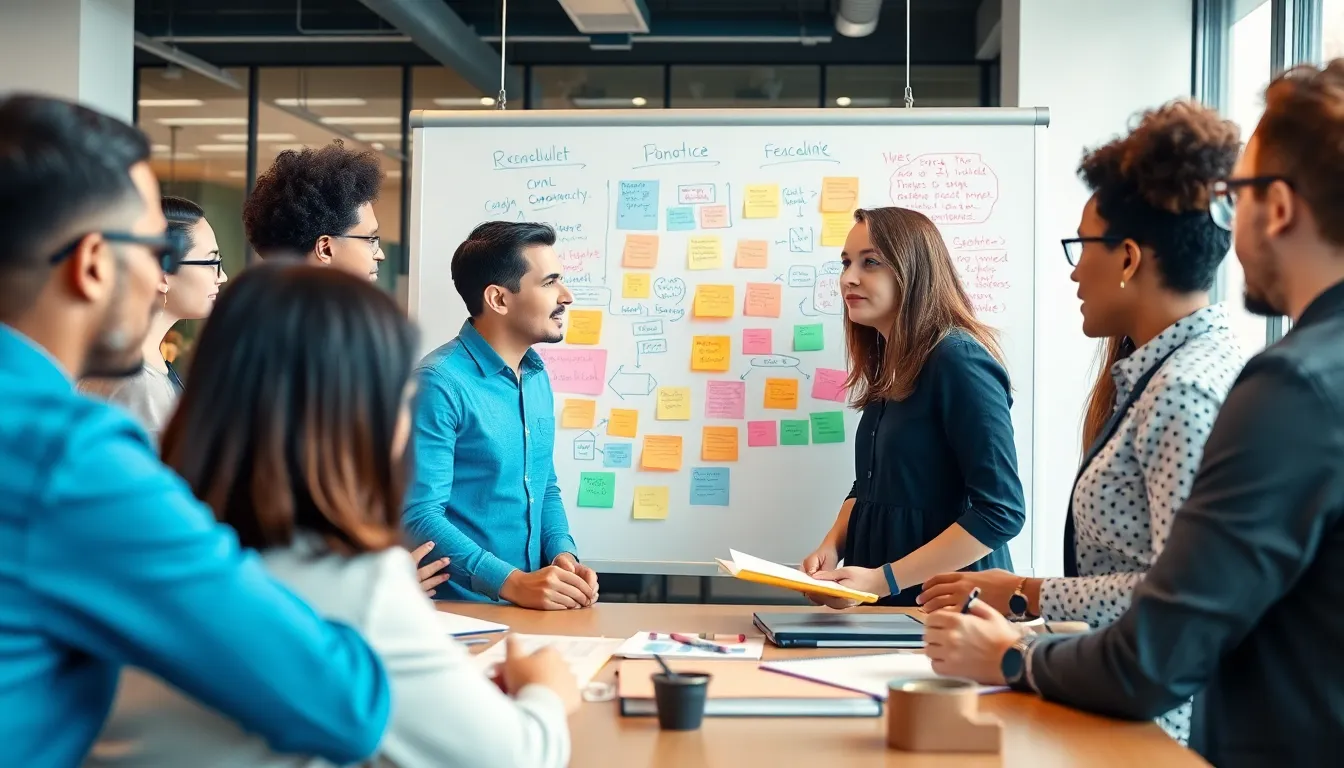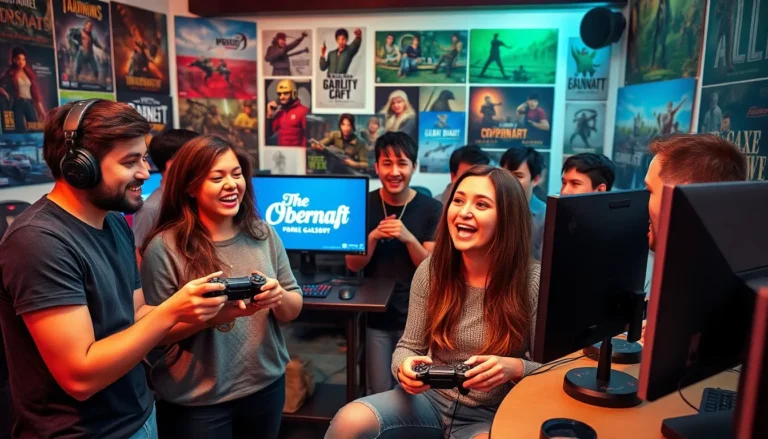In a world where creativity often battles the mundane, finding ways to enhance creative work can feel like trying to catch a greased pig. But fear not! With a sprinkle of innovation and a dash of humor, improving creative processes can become not just achievable but downright enjoyable. Imagine transforming those drab brainstorming sessions into lively think tanks where ideas flow like coffee at a Monday morning meeting.
Table of Contents
ToggleUnderstanding Creative Work Improvements
Creative work improvements enhance the ability to generate unique ideas and solutions in professional settings. These innovations enrich routine tasks, making them more engaging and effective.
Definition and Importance
Creative work improvements refer to strategies and methodologies that enhance creativity within a work environment. They emphasize the need for flexibility and experimentation in various processes. Fostering an environment that encourages creativity is vital for driving innovation. Creativity directly correlates with team collaboration and problem-solving capabilities. By embracing creative work improvements, organizations can cultivate a vibrant culture that attracts and retains talent.
Key Benefits
Creative work improvements offer numerous advantages that significantly impact organizations. They lead to increased employee engagement, inspiring individuals to contribute their unique perspectives. Innovation improves the quality of products and services, resulting in a competitive edge in the marketplace. Adaptability becomes easier as teams develop the ability to pivot and respond to change effectively. Organizations experience enhanced productivity levels as creative solutions streamline workflows and reduce redundancies. Ultimately, creative work improvements contribute to a resilient, forward-thinking organizational culture.
Strategies for Enhancing Creativity

Creative improvement thrives on diverse strategies. Engaging methods can stimulate innovative thinking and lead to unique solutions.
Collaborative Approaches
Collaboration sparks creativity by harnessing diverse perspectives. Group brainstorming sessions often yield a wealth of ideas, as participants build on each other’s contributions. Teams can use structured formats, such as design thinking, to foster an environment where everyone feels empowered to share. Different viewpoints introduce fresh insights, making the collaboration dynamic and effective. Surrounding oneself with various skill sets enhances problem-solving capabilities and drives innovation forward.
Embracing Diversity
Diversity is vital for creative growth. Including individuals from varied backgrounds, cultures, and experiences promotes a richer exchange of ideas. Diverse teams generate unique solutions that a homogeneous group might overlook. Encouraging open dialogues enables teams to explore concepts from multiple angles, leading to innovative breakthroughs. By valuing different perspectives, organizations enhance their creative processes, making them more adaptable to change and better equipped to tackle challenges.
Tools and Techniques for Creative Work
Creative work thrives on the use of various tools and techniques that unlock potential and inspire innovation. Appropriate resources enhance productivity and stimulate unique perspectives.
Digital Solutions
Digital tools play a vital role in enhancing creativity. Platforms like Trello and Asana organize tasks visually, helping teams manage their ideas effectively. Online collaboration tools such as Miro and Slack facilitate communication, allowing for seamless idea exchanges among team members. Software like MindMeister achieves mind mapping for brainstorming sessions, providing a structured visual format for conceptualizing ideas. Adobe Creative Cloud offers an array of applications for design, giving creatives the freedom to experiment with various digital mediums. By leveraging these digital solutions, organizations streamline workflows and ignite creative processes.
Traditional Methods
Traditional techniques remain relevant in fostering creative improvements. Techniques like mind mapping encourage free-thinking and idea exploration, enhancing collaboration within teams. Workshops that utilize role-playing or improvisation can invigorate team dynamics and inspire innovative approaches. Whiteboard sessions promote brainstorming and allow for spontaneous idea sharing, leading to unexpected breakthroughs. Storytelling sessions facilitate deeper connections among team members, using narratives to build shared visions and inspire creativity. Engaging in these traditional methods enriches team interactions and cultivates an environment that prioritizes creativity.
Measuring the Impact of Creative Work Improvements
Organizations can assess the effectiveness of creative work improvements using various metrics and indicators. Key performance indicators such as employee engagement scores highlight how motivated employees feel. Tracking the number of innovative ideas generated during brainstorming sessions provides insight into the creativity fostered within teams. Additionally, measuring productivity through project completion rates helps evaluate how creative strategies influence workflow efficiency. By analyzing customer feedback and satisfaction ratings, companies can gauge the impact of improved creative processes on service quality. Overall, these metrics form a comprehensive overview of creative work improvements.
Metrics and Indicators
Specific metrics and indicators reveal the impact of creative strategies. Employee surveys often yield valuable insights into engagement levels. Feedback scores from brainstorming sessions can demonstrate the effectiveness of diverse approaches. The number of projects completed within deadlines illustrates the boost in productivity. Moreover, tracking the rate of new ideas implemented showcases the success of innovation initiatives. Case studies serve as practical examples, grounding these metrics in real-world contexts.
Case Studies
Real-world case studies illustrate the benefits of creative work improvements. Company X implemented design thinking workshops, leading to a 30% increase in new product ideas over six months. At Company Y, cross-department collaboration resulted in a significant boost in employee engagement, raising scores by 25%. Company Z adopted digital tools like Miro for brainstorming, which increased completion rates for projects by 40%. Each case highlights how tailored strategies can enhance creativity and drive significant business outcomes. Notably, these examples underscore the importance of applying creative work improvements for tangible results.
Embracing creative work improvements is essential for fostering a vibrant and innovative workplace. By implementing diverse strategies and tools, organizations can break free from routine and inspire fresh ideas. This not only enhances employee engagement but also drives productivity and adaptability in an ever-changing environment.
The journey toward enhanced creativity is ongoing and requires commitment from all levels of an organization. As teams collaborate and explore new approaches, they’ll unlock their full potential. Ultimately, investing in creative processes cultivates a culture of innovation that benefits everyone involved.



